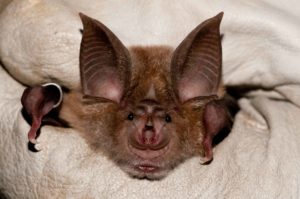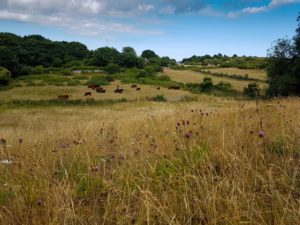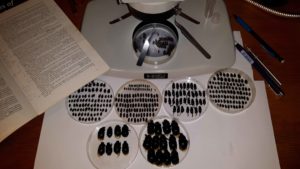Awards 2020 Winner’s Spotlight: Best Practice Large Scale Mitigation
Landscove Holiday Park
Park Holidays UK Ltd, Landscove Holidays Ltd, BSG Ecology
This award was sponsored by 
Landscove Holiday Park is located on the ‘English Riviera’ adjacent to the South Hams SAC (designated for greater horseshoe bats). The main constraint on a proposal to extend and modernise the site was biodiversity. Baseline surveys established that SAC bats commuted from a maternity roost at Berry Head (500m NW) along the northern and southern site boundaries. There was therefore potential to impact upon commuting routes, and reduce foraging opportunities within and close to the Holiday Park through land-use intensification and increased disturbance and light levels.
The Ecological Management Plan (EMP) aimed to avoid impacts on SAC bats and increase the population’s resilience through mitigation devised to provide holistic support for their complex ecological requirements. Specific objectives were to: maintain and enhance existing habitat used by SAC bats; create habitats of value to commuting and foraging SAC bats; avoid impacts from light pollution; and provide new night roosting opportunities. The approach taken needed to recognise the multiple factors affecting the viability of the bat population at Berry Head and in the wider SAC.
Mitigation and enhancement included:
- Securing a long term management agreement to deliver enhanced yearround foraging resources for horseshoe bats on six hectares (ha) of land through the re-establishment of organic grazing on derelict pastures (3.15ha), the reinstatement of traditional haymaking and aftermath grazing. This has included restoration of 2.17ha of lowland meadow.
- Regeneration of the dung invertebrate community, to increase the diversity and abundance of species present which provide an important food source for greater horseshoe bats emerging from hibernation, in early summer and for juvenile greater horseshoe bats.
- Restoration of species-rich grassland, improving the moth community; a key prey group for bats in mid-summer.
- Designing night roosting opportunities into stock shelters to maximise local utilisation of food resources within meadows and pastures.
- Provision of new traditional Devon bank hedgerows (345m) for commuting and perch feeding and new mixed native hedgerow (354m).
- Provision of new broadleaf woodland (0.19ha) and native scrub (0.75ha) to provide foraging opportunities in spring.
- Strengthening existing flight lines through buffer planting and parallel hedgerows.
- Modelling light spillage to inform measures to ensure a maximum illumination of 0.5lux along perimeter hedgerows.
- Installation of low-level directional lighting with limited spill throughout the Holiday Park
Monitoring of the effectiveness of mitigation and management prescriptions (2013-2019 inclusive) involved: dung beetle surveys; roost counts; fixed point acoustic monitoring; and walked transects. Thermal imaging was included from 2015. Results were considered with reference to counts of the maternity roost at Berry Head.
In relation to the greater horseshoe bats population monitoring has shown:
- Foraging activity in the restored pastures has increased steadily. In 2018 foraging activity recorded on visits between July and September was between 1.75 and 5 times greater than baseline (2013) levels, and in August 2019 up to 20 times the level of activity recorded in 2013.
- Greater horseshoe bats are using the night shelter roosts most nights. These are also used by lesser horseshoe bats and breeding barn swallows.
- Commuting routes along the site boundaries remain in use, with 2019 activity levels being slightly higher than those recorded in 2013 at key monitoring points north and south of the holiday park. Measurements have demonstrated that maximum lighting levels of 0.5lux have been achieved along these routes.
- Roost counts at Berry Head indicate the colony has remained constant throughout.
This monitoring completed from 2013- 2019 has demonstrated that all of the objectives have been met, and that cost of ecological inputs (£156k) has been considerably outweighed by the economic benefit and the conservation gain realised.


Over the next few weeks, we will be posting further information on each of the 2020 CIEEM Awards Winners over on our blog. A full recording of the event is now available to watch online. Further details on each project/individual is set out in our 2020 CIEEM Awards Booklet.
